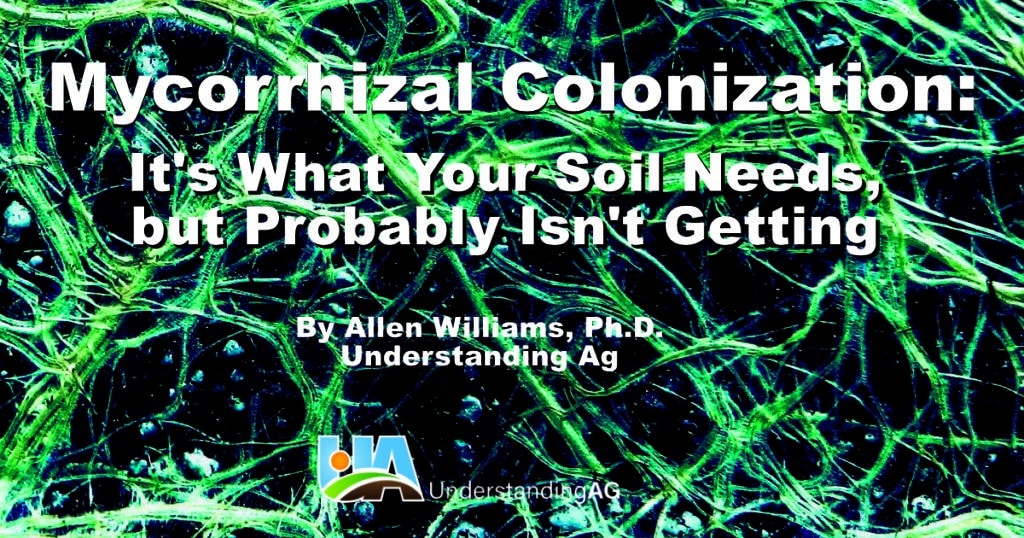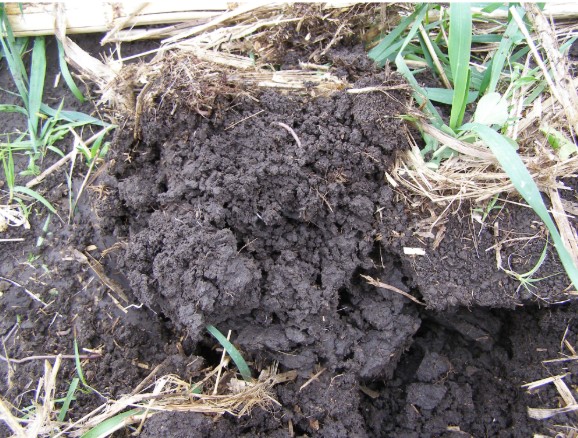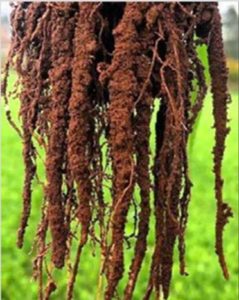
At Understanding Ag, we have looked at tens of thousands of soil test results that combine the Haney, PLFA, and TND (Total Nutrient Digestion) tests. The Haney Test is similar to a traditional soil test that also supplies us with a 30,000-foot view of soil health by testing for soil microbial respiration, organic carbon fraction (WEOC), microbially active carbon (MAC), and the carbon to nitrogen ratio (C:N). The PLFA test is a pure soil biology test that looks at parameters such as total living microbial biomass, total bacteria, total fungi, mycorrhizal fungi, saprophytic fungi, and protozoa. The TND test provides a look at the complete mineral composition of the soil at sampling depth.
This article is not going to go into detail about these tests and how to interpret them. Rather, I will use the results from tens of thousands of these tests over the breath and depth of North America to show what the vast majority of our agronomic soils are missing. This includes both cropland and pastureland.
Time after time, when we look at the results of this suite of soil tests, we find one thing in common, all too often. The vast majority of our soils are deficient in one thing. Not nitrogen, not phosphorus, not calcium, not another element (B, Cu, Zn, Mn, Mg, Al, etc.). Not what we would suspect is the “usual” culprit. As a matter of fact, the deficiency is not an element (mineral) at all. It is not organic matter or carbon. It is actually a soil microorganism: mycorrhizal fungi.
That’s right. The biggest deficiency that we see in almost all cropland and pastureland we have tested is a microbial species that plays a very large role in soil health. Mycorrhizal fungi are often found to comprise less than 3-4% of the total living microbial biomass in our soils. Greater than 90% of all the soil samples we look at are bacterially dominated (85 – 95% bacteria) and terribly deficient in mycorrhizal fungi (MF).
Benefits of Mycorrhizal Fungi
Why is this so alarming? The answer is because MF control a number of key functions in the soil. Since this is not an article about MF, but rather how we correct the situation, I will list only the top key functions of MF in our soil.
- Interconnect all plant roots in a continuous field and even between fields.
- Sends signals to all plants when plants in one area of a field are being preyed upon by pests.
- Produce biotic glues that stick together tiny soil particles to form much larger soil aggregates for significantly improved water infiltration and retention.
- These same soil aggregates relieve soil compaction.
- Capture nutrients in the soil and feed them to the plants.
- Act as the plant’s principal immune system against fungal disease.
- Move nutrients in a field from an area of higher concentration to an area of lower concentration.
- Greatly extend the reach of an individual plant’s roots.
How do we know what highly mycorrhizal soils look like? First, they will have significant soil aggregation (Picture 1). Additionally, the roots of the plants will be surrounded by a soil coating (Picture 2).


Building Mycorrhizal Populations
With all of these important functions, it stands to reason that we would want to encourage and facilitate a far better MF population in our soils. The question is just how do we accomplish that? Following are some of the management strategies and practices we can implement to encourage greater mycorrhizal colonization and population growth.
- Focus on growing plants that have strong mycorrhizal associations. This would be grasses and certain forbs (or plants we call weeds). Most of the grasses we grow have good-to-great MF associations. If we rank them in their ability to form strong and vast MF populations, we rank warm season grasses (C4) ahead of cool season grasses (C3). Both have good MF colonization ability, but the C4 grasses even more so.
- Focus on perennial species, as much as feasible. In comparing annual species to perennial species, the perennial species take the upper hand. It is not that annual grasses cannot form MF associations, because they do. Rather, it is because the perennials form much stronger and longer lasting MF associations.
- Woody and brushy plant species tend to have very strong MF associations, so strategically incorporating them into our pastures and into mixes can help forge stronger MF populations. So, rather than hate those areas where you have blackberry, buck brush, sumac, and other woodies, use them strategically in your grazing to spread mycorrhizal populations across your pastures. This holds true for many weedy species as well. For example, dig beneath thicker patches of thistle, cocklebur, or mare’s tail and you will see soil that is fairly well aggregated.
- More mature plants carry greater amounts of MF spores than highly vegetative plants. Most grazers strive to keep their grasses as vegetative as possible during the active growing season. Vegetative grasses will not be as mycorrhizal-rich as more mature grasses. So, by allowing our plants to gain greater maturity before we graze them, we can spread MF populations.
- We can use our livestock as a tool to spread MF colonization by grazing them, from time to time, in more mature paddocks and then moving them to paddocks that lack good MF populations. They spread the MF spores in their manure.
- Avoid all forms of tillage as much as possible. Think of your mycorrhizal fungi population being like a giant roll of gauze. If you unrolled a giant roll of gauze on your pasture or field and then used any form of tillage, what would happen to the gauze? It would be cut to shreds. All forms of tillage damage mycorrhizal fungi and it takes a long time for repair to occur.
- Frequency of mowing and/or grazing in any one pasture or field significantly affects mycorrhizal populations. The more you mow, the lower the MF population will be and we see this in hay fields. The more frequently you graze a pasture, the lower your MF population will be. Too many grazers come back too soon after a previous graze, hitting a pasture every 30 days or 40 days. Do not expect good MF colonization when that is the case. Here's why:
- Too frequent mowing or grazing keeps the grass short, and the soil is more exposed to heat from the sun and to moisture loss. Hot, dry soil is not conducive to MF.
- Grazing or mowing too frequently causes root growth stoppage. The MF live in association with plant roots. Lower the percentage of living plant root mass and you lower the active MF population.
- Mowing or grazing a field too frequently lowers plant species diversity. This lowers MF species diversity and critical biomass.
- Too much disturbance stimulates soil bacteria, causing them to voraciously consume carbon sources of food from the soil. This includes the biotic glues produced by MF that aggregate the soil particles. As the biotic glues are consumed, the soil aggregates disappear and the soil collapses on itself.
Summary
Mycorrhizal fungi are the key microbial species lacking in most of our crop fields, hay fields and pastures across North America. Because they perform so many vital functions, this creates serious issues in soil function including a reduction in the ability to infiltrate and retain water, reduced nutrient cycling, and diminished plant resistance to fungal disease and pests.
Our focus needs to be on first restoring our mycorrhizal populations, then building them to a highly functional point. If we implement management strategies that build mycorrhizal populations then we get to enjoy the many benefits that they confer.
